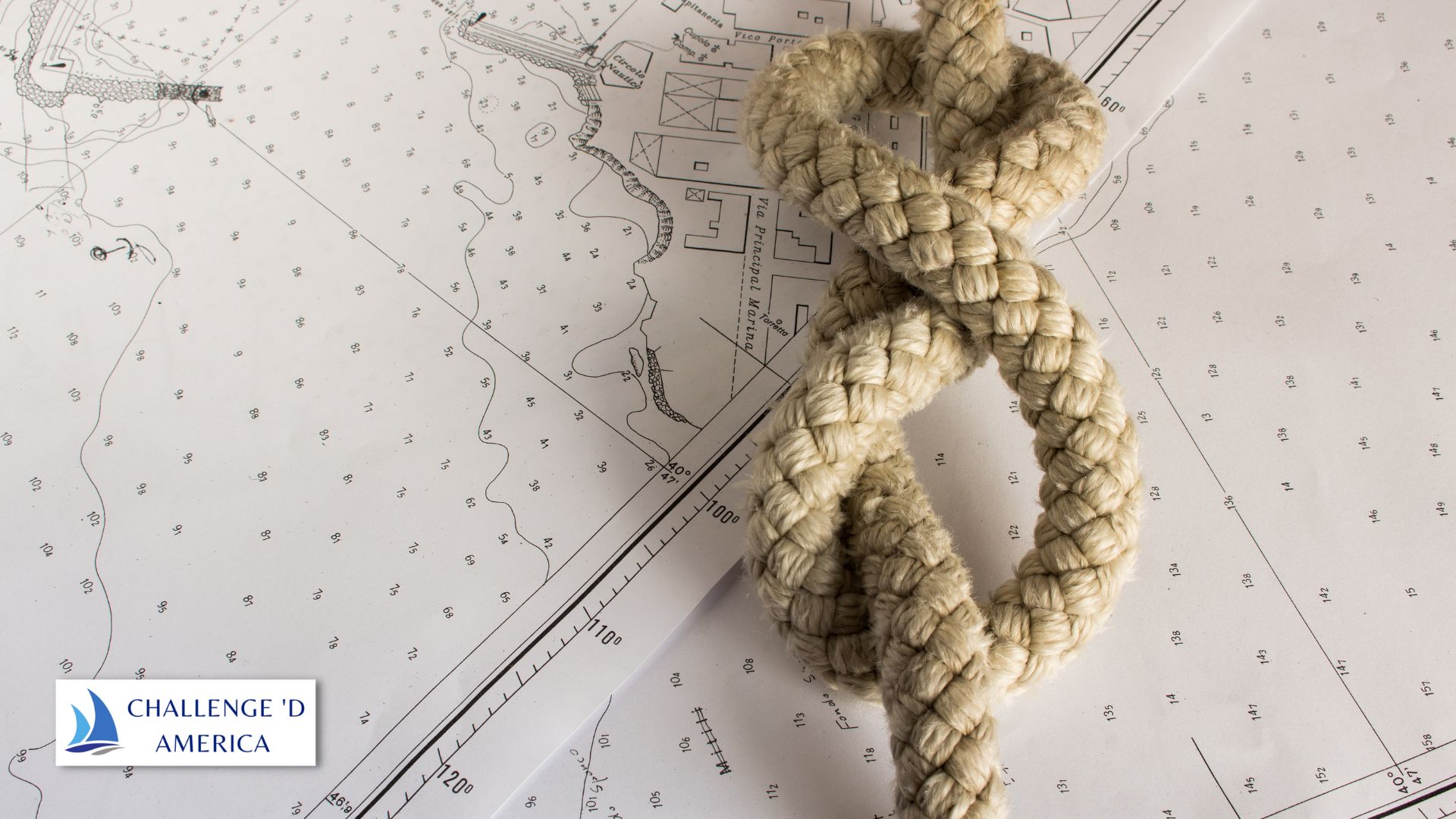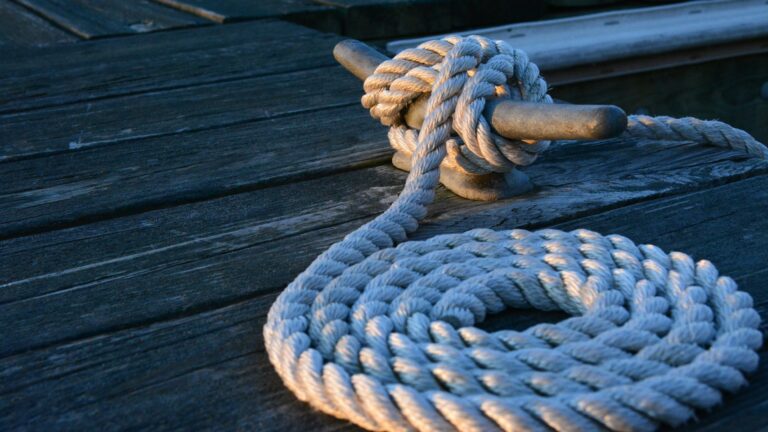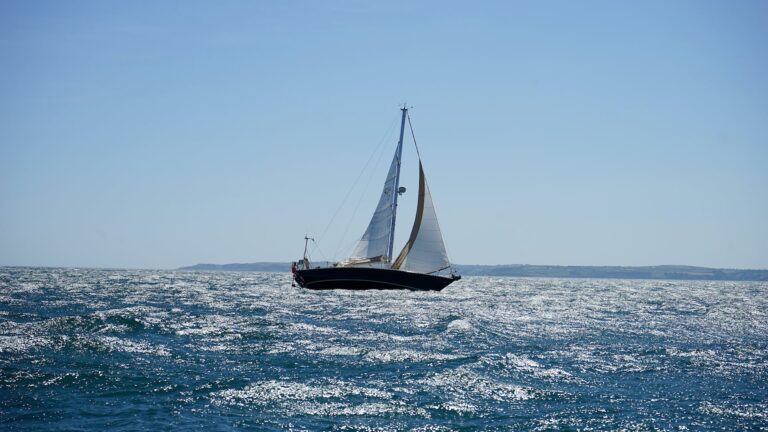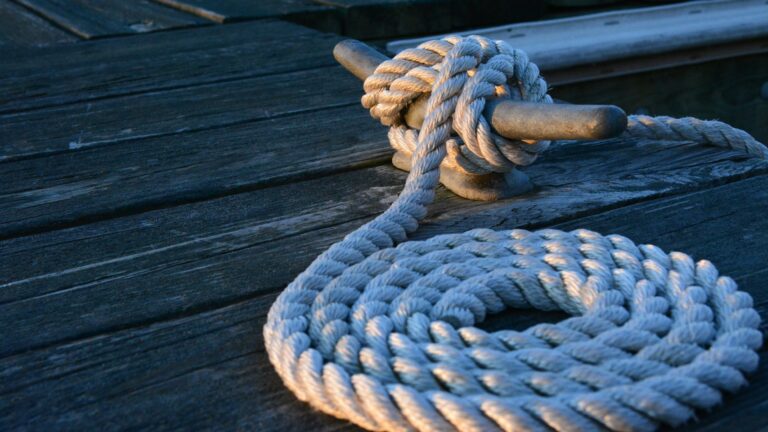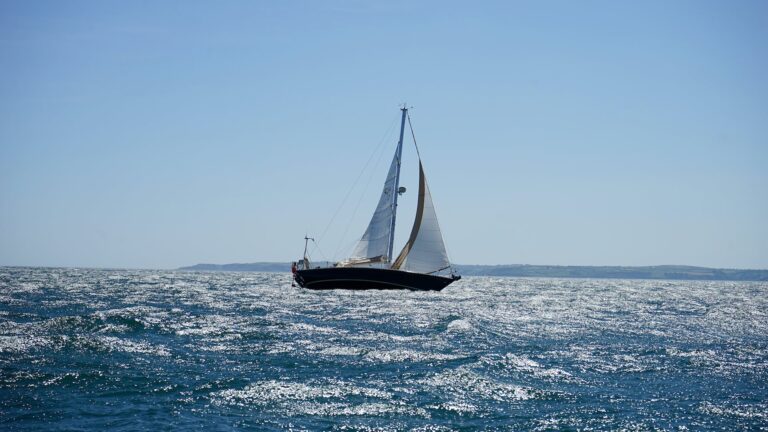Super Strong Knots For Sailing
Today, I’m here to talk about a topic that is close to my heart: super strong knots for sailing. For those of us out on the open seas, knowing how to tie reliable and secure knots is absolutely essential.
So in this article, I’m going to share with you some of my favorite knots that I use when setting sail.
With these knots, you can rest assured that your sails and rigging will stay secure and safe while you explore the ocean. So let’s get started!”
The Most Important Strong Nautical Knots
For any sailor, learning the basics of nautical knots is a necessary skill. Knowing which knots are strongest will give you the confidence that your sailing vessel is secure and safe on the water. Here are four of the most important strong nautical knots that every sailor should know:
1. Figure eight knot (figure 8 loop)
The Figure Eight Knot, or Figure Eight Loop, is an essential knot for sailors. This knot is the basis for several other knots, and is also an important knot to know when you’re camping, fishing, or doing any type of outdoor activity.
The Figure Eight Knot is a strong, secure knot that is used to join two ends of a rope together, and is also used to tie a rope to an object, like a cleat or a post.
The loop created by the knot is easy to tie and untie, making it perfect for use in a variety of situations. The Figure Eight Knot is a versatile knot that is a must-know for any sailor.
2. Clove Hitch
One of the most popular knots used in sailing is the Clove Hitch, and for good reason. It is incredibly strong, easy to tie, and can be used in a variety of situations.
The Clove Hitch is an excellent knot for securing lines to poles, posts, and other objects. It is also used to secure a line to a cleat so that a boat can be moored securely.
The Clove Hitch is an ideal knot for sailing because of its versatility. It can be tied quickly, even under pressure when time is of the essence.
The knot is also strong and secure, and won’t slip or come undone when put under strain. This makes it a great choice for securing a boat to a dock, or for attaching a line to a cleat on the boat itself.
The Clove Hitch is also easy to tie and untie, making it perfect for situations where you may need to adjust or untie the knot quickly. This is especially useful when sailing, as you may need to quickly adjust or untie the knot to alter the mooring or move the boat.
Overall, the Clove Hitch is an excellent knot for sailing. Its strength, ease of tying, and versatility make it an ideal choice for a variety of sailing tasks.
3. Bowline knot
The Bowline Knot is one of the most important Strong Nautical Knots. This knot is considered by many to be the best knot for forming a secure loop at the end of a rope. It is strong, stable, and relatively easy to tie.
It is often used to secure mooring lines, anchor lines, and other lines used on boats. It is also used to tie two ropes together. The Bowline Knot is an essential knot for sailors and should be part of every sailor’s repertoire.
It is particularly useful in emergency situations, when a secure knot is needed quickly. The Bowline Knot is a classic knot with a long history and is still used today by sailors all over the world.
4. Round Turn With Two Half Hitches
This strong and reliable knot is particularly useful for tying off a line to a post, spar or cleat. It is easy to tie and untie, and can be used in many different applications.
The round turn with two half hitches is made by first taking a turn around the object to be tied off to, and then making two half hitches around the line itself.
This knot is exceptionally secure and can easily withstand the powerful forces that can be present in a nautical environment. A great knot to have in your repertoire, the round turn with two half hitches is an essential nautical knot.
5. Cleat Hitch
The Cleat Hitch is one of the most important strong nautical knots for any sailor. This knot is very useful in securing a line to a cleat, which is a fitting used to secure a rope or line.
The Cleat Hitch is an essential skill for any sailor, as it is used for many purposes, such as anchoring, docking, and mooring.
To tie the Cleat Hitch, thread the line through the cleat and take two turns around the base of the cleat, leaving the standing part of the line on the outside. Cross the line over the top of the cleat and then tuck the end of the line underneath the two turns. Finally, pull the end of the line tight, and the Cleat Hitch is complete.
The Cleat Hitch is a very strong and reliable knot, and it will hold even under heavy strain. It is also one of the simplest nautical knots to tie, making it a great choice for novice sailors. For these reasons, the Cleat Hitch is an essential knot for any sailor, and should not be overlooked.
6. Reef Knot
The reef knot, also known as the square knot, is one of the most commonly used nautical knots for sailors. It is used to securely tie two lines together, and is easy to learn and tie quickly.
The reef knot is an essential knot for sailors, as it is used to tie two pieces of line together securely, but it can also be used as a stopper knot to prevent a line from running through a block or fairlead.
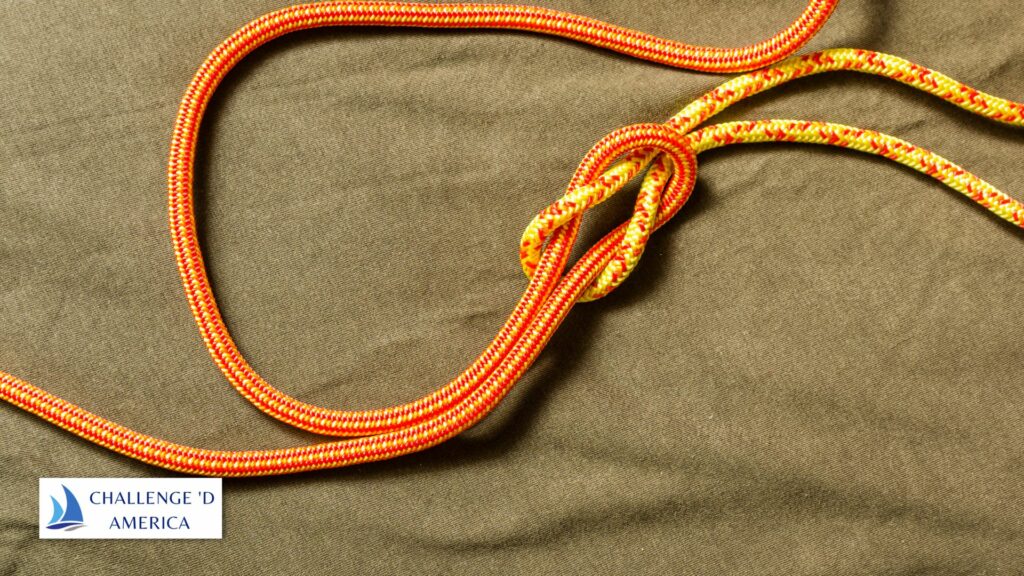
The reef knot is one of the most reliable knots, and is a great choice for any sailor who needs a knot that is both simple and secure. The knot is easy to tie, and can be undone quickly if needed.
The reef knot is also versatile, and can be used in a variety of other applications. It is strong, and can be used to join two pieces of rope together in a variety of ways.
7. Zeppelin Bend
The Zeppelin Bend is a strong and reliable knot used in sailing and other nautical applications. It is also known as the Sampson Knot and is considered one of the strongest knots for joining two ropes of the same or different diameters.
In its construction, the Zeppelin Bend forms a loop in one rope, and the other is passed through the loop in a figure eight pattern. This results in a knot that is both secure and easy to untie, even after being subjected to high levels of tension or strain.
The Zeppelin Bend’s strength and security makes it an ideal knot for securely joining two ropes, or for joining a rope to a metal object, such as a cleat or a ring. It is also useful in attaching a rope to itself, such as when creating a loop or a lanyard.
Whether you’re sailing, fishing, or engaging in any other nautical activity, the Zeppelin Bend is a knot you will definitely want to have in your repertoire. It’s one of the strongest and most reliable knots for joining two ropes, and can be used in a variety of situations.
8. Rolling Hitch
The rolling hitch is an essential knot for sailors. It’s perfect for a variety of applications, including attaching a line to a pole or spar, or for temporarily tying a line to a ring or other object. This knot is especially useful when the line may need to be released quickly or adjusted frequently.
To tie a rolling hitch, start with two loops around the object you’re tying to. The working end should be on the outside of the loop closest to you.
Take the working end and wrap it around both loops, going underneath the second loop, then over the top and back through the second loop again. Finally, tie an overhand knot with the working end and pull tight.
The rolling hitch is particularly effective when the line tightens as the load increases. This allows sailors to adjust the tension when necessary. It’s also easy to untie, making it an invaluable knot for a variety of nautical applications.
9. Sheet Bend (Double Sheet Bend)
The sheet bend (also known as a double sheet bend) is a versatile knot used to tie two ropes of different diameters together. It is a secure knot that is easy to tie and untie, and is often used to join two lines of unequal sizes.
To tie a sheet bend, hold the thicker rope in your left hand. Make a loop in the thicker rope and pass the thinner rope through it. Take the end of the thinner rope and pass it around the outside of the thicker rope and back through the loop. Pull the ropes tight and it’s finished.
The sheet bend is an essential knot for sailors, particularly when a smaller rope needs to be attached to a larger one. The knot is strong and reliable, making it the first choice for securing a mooring line.
It is also used in emergency situations, such as when a lightweight rope needs to be attached to a heavier one quickly.
The double sheet bend is a variation of the sheet bend that is used when two ropes of equal size need to be joined. To tie a double sheet bend, make two loops in the two ropes and pass them through each other.
Then, pass the end of one rope around the standing part of the other rope and back through the loop. Finally, pull the ropes tight and it’s finished.
No matter what the situation, the sheet bend and double sheet bend are essential knots for all sailors. They are strong and reliable, making them the perfect choice for any joining or mooring job.
What Is The Strongest Sailing Knot?
When it comes to sailing, the strongest knot you can use is the double fisherman’s knot. This knot is incredibly strong and secure, and is one of the most reliable knots when it comes to sailing.
The double fisherman’s knot is a variant of the traditional fisherman’s knot, and is made by tying two of the traditional knots together. This knot is also very versatile, as it can be used for joining two lines together as well as for tying a loop around a ring or post.
The double fisherman’s knot is an incredibly strong knot, as it can hold up to 90 percent of the line’s original strength. This makes it the perfect choice for securing a sail to a mast, as it is highly unlikely that the knot will come undone in rough conditions.
The double fisherman’s knot is also very easy to tie, making it a great choice for sailors of all skill levels. It is also very easy to untie, and won’t damage the line, making it ideal for sailors who want to keep their lines in top condition.
So if you’re looking for a reliable and strong knot for sailing, the double fisherman’s knot is the perfect choice. It’s strong, easy to tie, and won’t damage your line.
Conclusion On Super Strong Knots For Sailing
I can attest to the importance of having strong and secure knots. Not only do they keep your boat safe, but they also secure your lines and sails in place.
In this article, I have discussed some of the strongest sailing knots, such as the bowline, the double fisherman’s knot, and the clove hitch.
All of these knots have stood the test of time and will serve you well for years to come. So, the next time you need a secure knot for your sailing needs, remember the advice from this article and choose one of these super strong knots.
With the right knot, you can rest assured that you will have a secure and safe sailing experience. Thank you for reading!”

